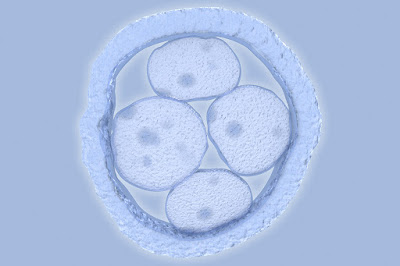CRISPR/Cas9-mediated gene editing in viable human embroyos
by noreply@blogger.com (brian wang) from NextBigFuture.com on (#2FG7T)
Researchers at the Guangzhou Medical University have used CRISPR gene editing on viable human embryos. Two other research groups in the UK and Sweden are working on CRISPR-editing viable human embryos. The New Scientist also notes rumors that three or four studies on the use of CRISPR in human embryos have been completed but not yet published.
In total, the mutation in one embryo was corrected in every cell, and two were corrected in some of the cells. It did not work at all in the other two embryos. In one, CRISPR induced another mutation rather than fixing the beta41-42.
The results so far, however, show the technology is far from the point where it could be safely used for editing embryos.
To make it safer to use gene editing to prevent children inheriting disease-causing mutations, researchers will need to find a way to prevent mosaicism (some but not all cells corrected). Edited embryos would always be tested before being implanted in a woman, but if they are mosaics such tests cannot guarantee the resulting child will be disease-free.
"This would need to be solved before the methods could be used clinically to correct a disease," says Lovell-Badge. Progress is already being made: at least two teams have already found ways of reducing the risk of mosaicism in animals.
Mosaicism could also be avoided by editing the genomes of sperm and eggs prior to IVF, rather than embryos. This is expected to become possible in people in the next few years.
There are also a few diseases where mosaicism might not matter, Lovell-Badge points out, such as metabolic liver diseases where only 20 per cent function is enough to keep people healthy.
Previous gene editing was performed using unviable human embyros (human tripronuclear zygotes) suggested that the clustered regularly interspaced short palindromic repeat (CRISPR)/Cas9 system could be a tool in correcting disease-causing mutations. However, whether this system was applicable in normal human (dual pronuclear, 2PN) zygotes was unclear. Researchers demonstrate that CRISPR/Cas9 is also effective as a gene-editing tool in human 2PN zygotes. By injection of Cas9 protein complexed with the appropriate sgRNAs and homology donors into one-cell human embryos, they demonstrated efficient homologous recombination-mediated correction of point mutations in HBB and G6PD. However, their results also reveal limitations of this correction procedure and highlight the need for further research.

Read more










In total, the mutation in one embryo was corrected in every cell, and two were corrected in some of the cells. It did not work at all in the other two embryos. In one, CRISPR induced another mutation rather than fixing the beta41-42.
The results so far, however, show the technology is far from the point where it could be safely used for editing embryos.
To make it safer to use gene editing to prevent children inheriting disease-causing mutations, researchers will need to find a way to prevent mosaicism (some but not all cells corrected). Edited embryos would always be tested before being implanted in a woman, but if they are mosaics such tests cannot guarantee the resulting child will be disease-free.
"This would need to be solved before the methods could be used clinically to correct a disease," says Lovell-Badge. Progress is already being made: at least two teams have already found ways of reducing the risk of mosaicism in animals.
Mosaicism could also be avoided by editing the genomes of sperm and eggs prior to IVF, rather than embryos. This is expected to become possible in people in the next few years.
There are also a few diseases where mosaicism might not matter, Lovell-Badge points out, such as metabolic liver diseases where only 20 per cent function is enough to keep people healthy.
Previous gene editing was performed using unviable human embyros (human tripronuclear zygotes) suggested that the clustered regularly interspaced short palindromic repeat (CRISPR)/Cas9 system could be a tool in correcting disease-causing mutations. However, whether this system was applicable in normal human (dual pronuclear, 2PN) zygotes was unclear. Researchers demonstrate that CRISPR/Cas9 is also effective as a gene-editing tool in human 2PN zygotes. By injection of Cas9 protein complexed with the appropriate sgRNAs and homology donors into one-cell human embryos, they demonstrated efficient homologous recombination-mediated correction of point mutations in HBB and G6PD. However, their results also reveal limitations of this correction procedure and highlight the need for further research.

Read more